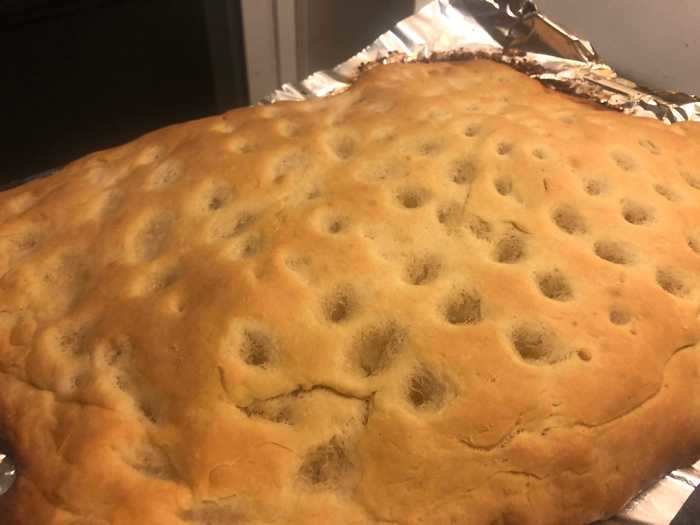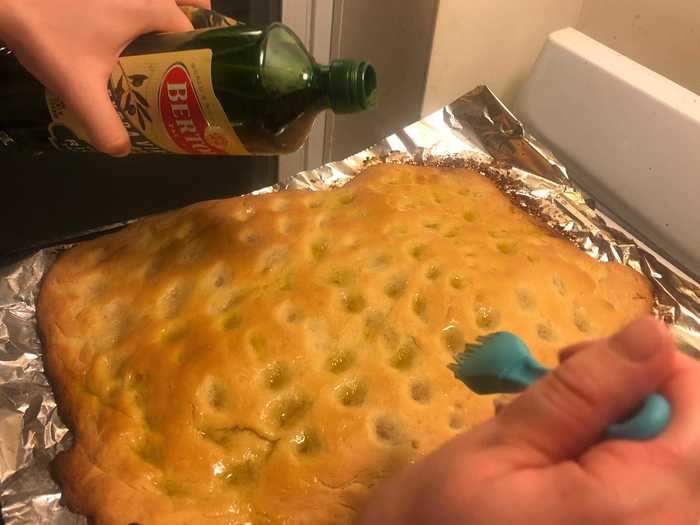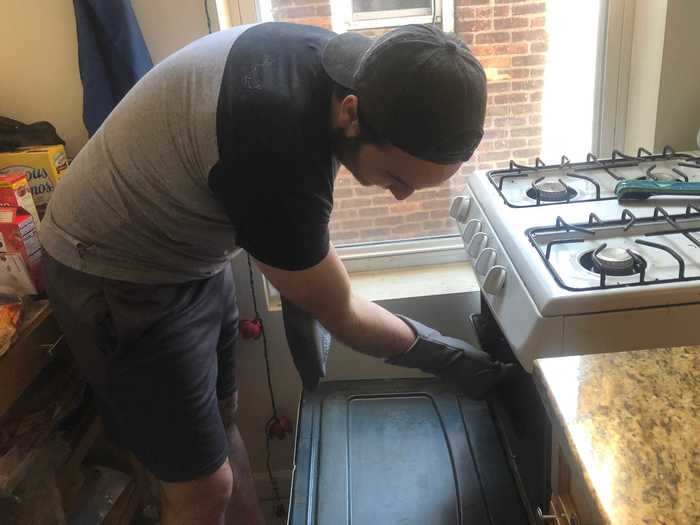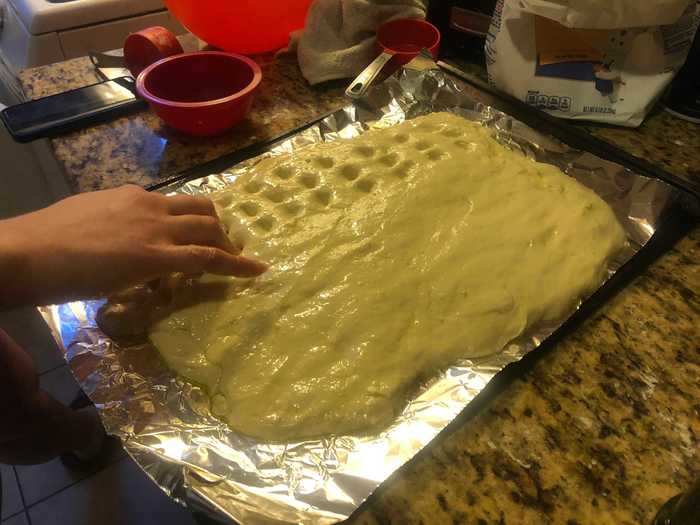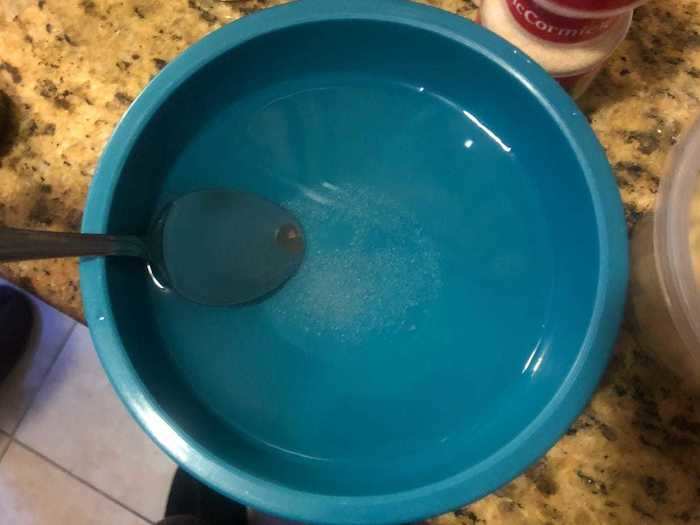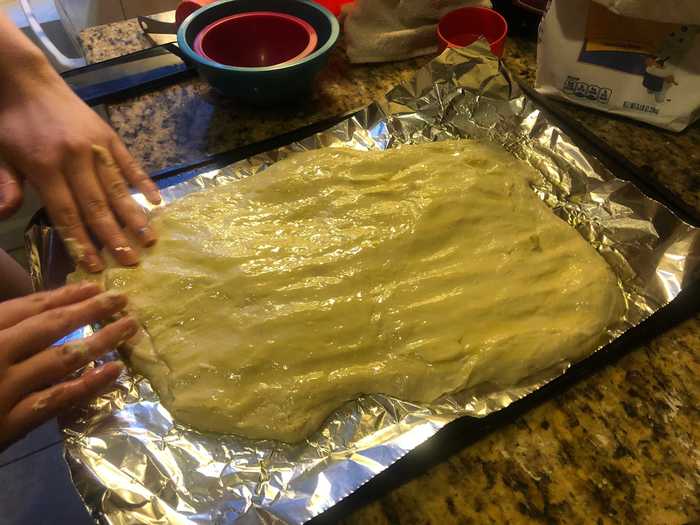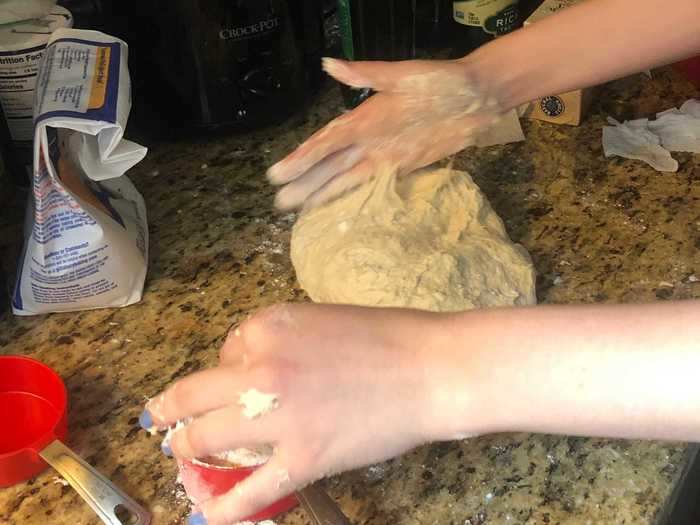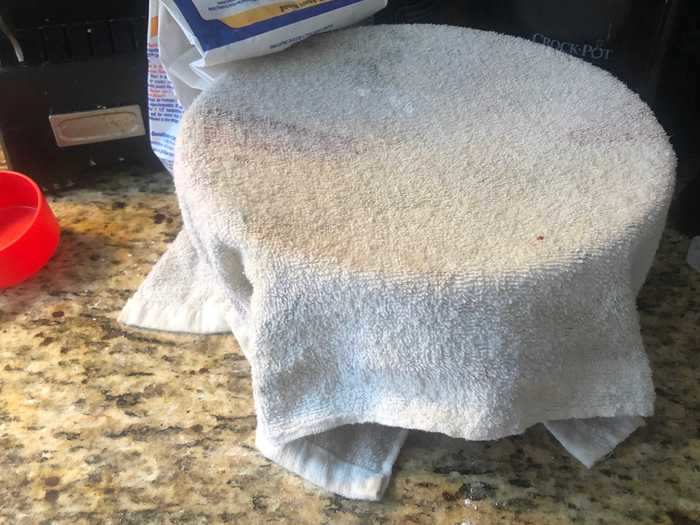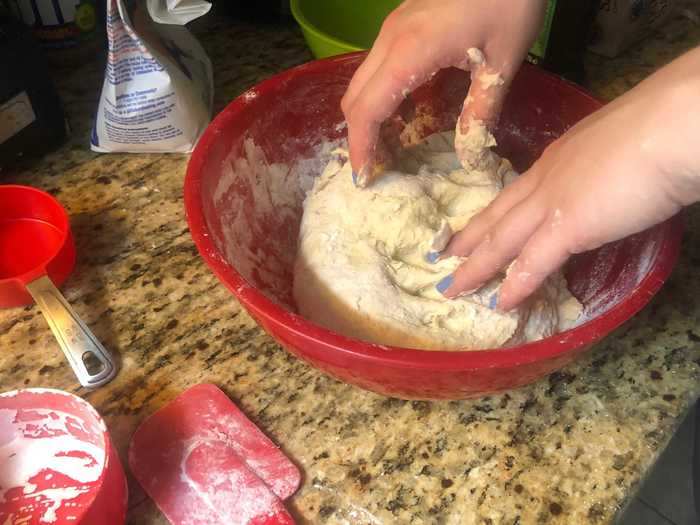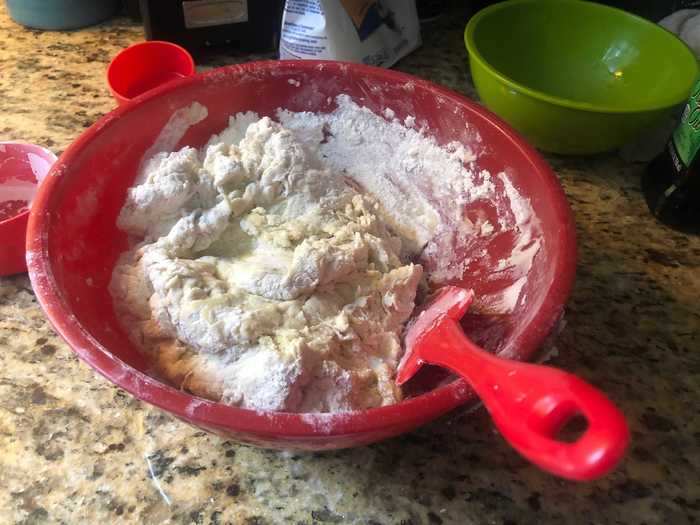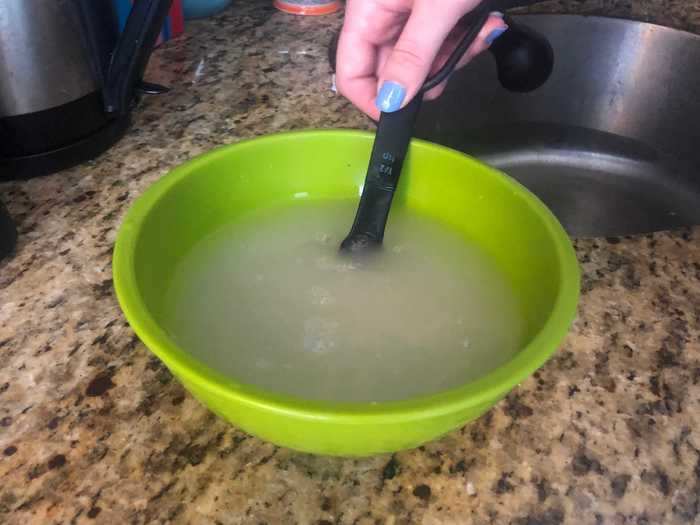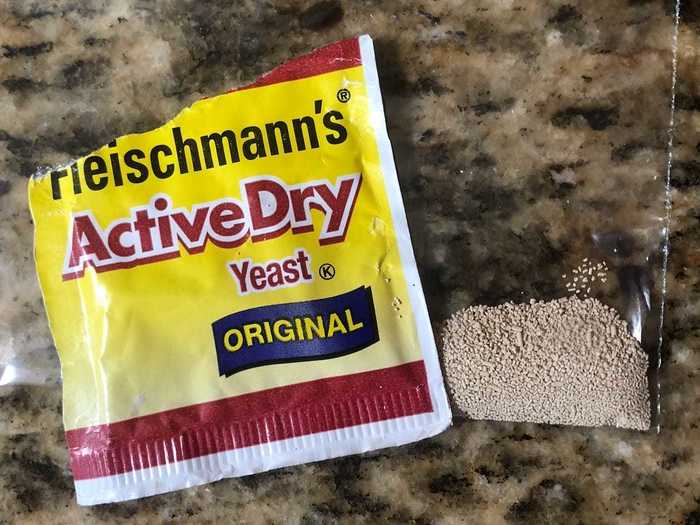Baking focaccia bread is soothing.Frank Olito/ Insider
- While in lockdown, people are baking bread to help pass the time.
- In an effort to understand why so many people are doing this, I decided to bake focaccia bread.
- I realized the repetitive motions of kneading the dough and brushing it with olive oil were very soothing.
- It was a relaxing way to waste some hours in lockdown, and I feel like it even helped reduce some stress.
- Visit Insider's homepage for more stories.
If you're anything like me, you've noticed that your social media feed has been filled with friends and family baking bread while social distancing.
At first, I found it strange that everyone decided this was the time to perfect their bread-baking skills, but then I figured they might be on to something. In an effort to try and understand this growing lockdown fad, I decided to try my hand at baking focaccia bread. I enlisted the help of my roommate who knows more about baking than I do (which isn't much) to bake The Kitchn's focaccia recipe.
After several hours of mixing, proving, and baking, I finally understood why this activity is the perfect answer to our boredom and stress.
Read the original article on
Insider
After baking the focaccia and eating it, I finally understood why so many people are obsessed with baking these days.
The finished bread.
Frank Olito/ Insider
As we all deal with the reality of staying home indefinitely, we are all looking for ways to entertain ourselves. At the same time, we are also living in a different and uncertain world, prompting stress and anxiety.
Through this experience, I learned that baking bread is the answer to all of that. It provided the perfect mix of keeping me productive while also keeping me relaxed. The repetitive motion of kneading the dough and then brushing it with olive oil is soothing and I believe it even helped reduce my stress levels.
Having a delicious bread to enjoy at the end of it all definitely helped, too.
Surprisingly, after just 45 minutes of baking, the bread was ready to come out of the oven.
Finish by brushing more olive oil.
Frank Olito/ Insider
When we checked the bread at the 45-minute mark, we saw that the outside was already starting to brown and the inside was fully cooked through. We decided to not go through with the full hour as the recipe suggested and instead took the bread out early. At this stage, we brushed a little more olive oil across the finished product.
After an hour, it was finally time to put the dough in the oven.
Putting the bread in the oven.
Frank Olito/ Insider
The recipe says the bread should be baked for one hour.
Next, we had to use our fingertips to create dimples so that the brine could easily seep into the dough.
Fingerprints in the dough.
Frank Olito/ Insider
We covered the entire dough in fingerprints and then filled each hole with the brine. To ensure the brine made the dough saltier and tastier, we let it sit for one hour.
While my roommate stretched out the dough on the pan, I got to work on making the brine.
The brine.
Frank Olito/ Insider
A brine is easily made by combining water and salt. I had to stir the bowl until the salt was completely dissolved.
After kneading it for 10 minutes, it was time to place the dough into its pan.
The dough on the baking sheet.
Frank Olito/ Insider
The recipe was very helpful in this step. It reads, "Gently stretch the dough to the edge of the sheet by placing your hands underneath and pulling outward. The dough will shrink a bit, so repeat stretching once or twice over the course of 30 minutes to ensure dough remains stretched."
We also covered the dough in an extra 2 tablespoons of olive oil at this stage.
After leaving the dough to prove for an hour, it was time for the fun part: kneading.
Kneading the sticky bread.
Frank Olito/ Insider
At this step, I started realizing why people love baking bread. It's tactile in that it that puts your hands to work. Also, it's extremely relaxing to constantly knead this squishy dough. I felt like I was a child again, playing with Play-Doh.
The dough at this stage is very sticky, so it may be difficult to handle at first. But you shouldn't add more flour because it could mess up the final product. Just enjoy the sticky mess!
After forming the dough into a ball, we let it sit for one hour in the bowl, covered with a dish towel.
The covered dough.
Frank Olito/ Insider
The recipe says you should leave the dough to ferment for a whopping 12 to 14 hours, but I am impatient. Per one of my expert baking friend's advice, it's fine to leave the dough to prove for just an hour. It just won't be as salty in the end.
Slowly, the mixture turned into the desired dough texture.
The dough.
Frank Olito/ Insider
Already, the dough was starting to get very sticky, which is what you want to happen when making focaccia.
It took a bit of elbow grease to really get all the ingredients incorporated.
Mixing all the ingredients together.
Frank Olito/ Insider
The goal here is to mix all the ingredients together to form a sticky dough.
After letting that bowl sit for a few minutes, we mixed the liquid with some flour, salt, and olive oil.
The flour, salt, oil, and yeast.
Frank Olito/ Insider
The recipe called for 5 1/3 cups of flour, 2 tablespoons of Kosher salt, and 1/4 cup extra-virgin olive oil.
.
Once the yeast was acquired, it was time to combine it with water and honey in a bowl.
The yeast, water, and honey in a bowl.
Frank Olito/ Insider
At first, I thought we did something wrong because it turned into an unappealing murky liquid. But we reread the recipe and made sure it was correct. Turns out, the water is supposed to look like that.
The first — and possibly the most challenging — step was acquiring the yeast.
The yeast.
Frank Olito/ Insider
As baking bread becomes more popular these days, it has become difficult to buy yeast. I went to two grocery stores in Brooklyn, and they were completely sold out. When I was just about to give up on the whole idea, my friend said he had an extra packet of yeast. He biked over to my apartment and left the yeast on the doorstep to ensure we didn't break our social distancing.

